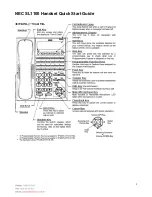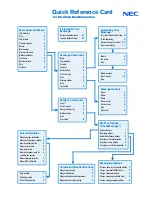
process one call forward. For example, Line 2 may be forwarded to Line 3,
and Line 3 may be forwarded to Line 4, but when Line 2 is called, the “ring
reminder” is heard, and Line 3 rings. Call Waiting does not work on a line
where Call Forwarding has been activated.
Demonstration / Test Mode
A special demonstration or test mode is available in the TLS-5C/D. This will
allow features that would normally require three telephones to demonstrate or
test a feature to be accomplished with only two phones. For example, dial
from Line 1 to Line 2 and establish a call, then Flash to invoke a Conference
Call. When dial tone is returned, a call placed again to Line 2 will simulate a
third party, causing a Call Waiting tone and (if enabled) a SCWID sequence to
be generated.
Using the Audio Port
The section below tells you how to generate a tape recorded message and play
the message over a TLS-5 line. You can record messages in either of two ways:
·
on the tape recorder (use of an external microphone is recommended)
-or-
·
using a telephone.
Tape Recorders
Please use tape recorders
without
automatic or dynamic level control because
automatic level control can amplify background noise, ruining the silent
period at the end of the message.
Notes:
(1) Always use a new tape or one that has been erased because the
TLS-5 looks for three seconds of silence followed by a sound for an
“
end-of-message
”
indication. See
“
End of Message Tape Sequence
”
at the
end of this section.
(2) Be sure the tape used is the correct bias type for the recorder.
Making a Tape on a Tape Recorder
The commands used in the following steps are explained in Chapter 6:
Programming.
Step 1:
Connect microphone
·
Connect a microphone to the cassette recorder/player.
Step 2:
Turn on player
·
Turn on the cassette recorder/player and press the RECORD button.
Step 3:
Speak message
·
Speak the message, taking care that you do not pause for more than three
seconds before the end of the message.
Chapter 4: Operation
40-400-00003, Rev.
E
Page 23
















































